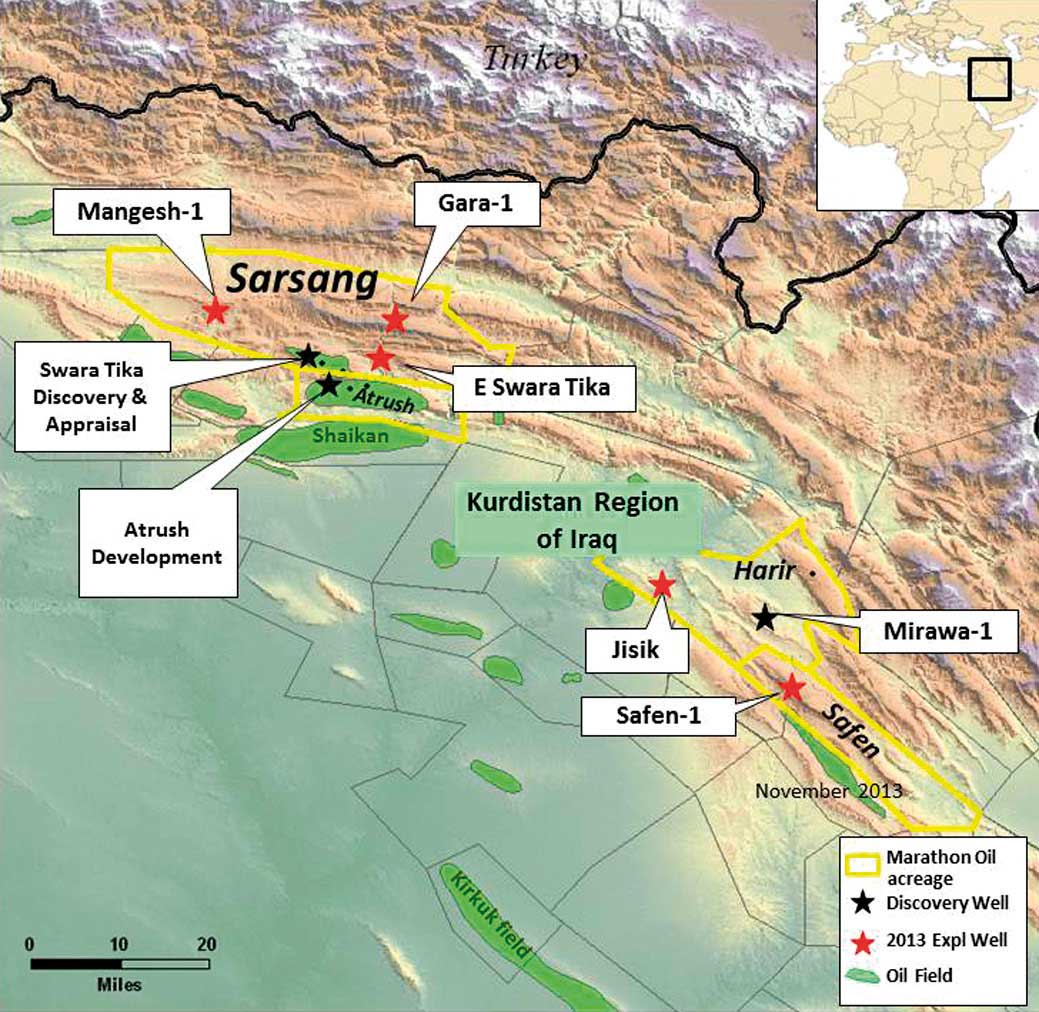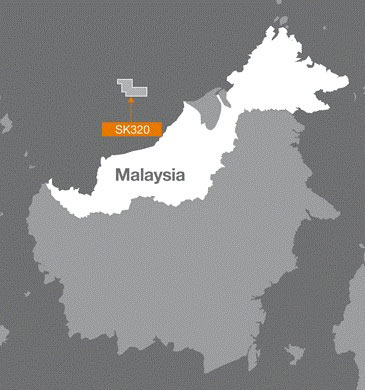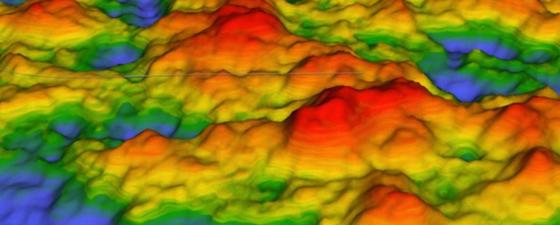Algeria: Sonatrach taps high potential oil play
 Source: IHSDescribed as one of the company’s most important finds in the last 20 years, Sonatrach has made an oil discovery with an estimated 1.3 Bbo in place in the region of Tamguid Messaoud, some 112 km from the giant Hassi Messaoud facility. The find is believed to be Hassi Toumiet Sud 1, that was drilled to a total depth of 3,700m in the Hassi Dzabat block 439, on the Hassi Messaoud (El Biod) High. According to Energy Minister Youcef Yousfi, Sonatrach would have to use non-conventional methods to extract 50% of the reserves from the new field, adding an extra 10% to costs.
Source: IHSDescribed as one of the company’s most important finds in the last 20 years, Sonatrach has made an oil discovery with an estimated 1.3 Bbo in place in the region of Tamguid Messaoud, some 112 km from the giant Hassi Messaoud facility. The find is believed to be Hassi Toumiet Sud 1, that was drilled to a total depth of 3,700m in the Hassi Dzabat block 439, on the Hassi Messaoud (El Biod) High. According to Energy Minister Youcef Yousfi, Sonatrach would have to use non-conventional methods to extract 50% of the reserves from the new field, adding an extra 10% to costs.
Algeria remains one of the largest natural gas suppliers to Europe but has been concerned about declining oil reserves for some time. While the Cambrian reservoirs stay an important target, Sonatrach has been keen to exploit the Ordovician reservoirs, which constitute a new and main objective not just in the satellite discoveries that surround the Hassi Messaoud oil and gas field but in the whole area. Eroded at the Hercynian unconformity in this giant field, the Ordovician reservoirs (mainly the Hamra Quartzites) form a ring around the Hassi Messaoud dome and represent an oil play with high potential. This latest find adds further weight to this understanding.
Hassi Messaoud, which lies about 560 km south-east of Algiers, originally had 38 Bbo in place and has been producing since 1957.
Iraq: Marathon high-risk high-reward success
 Source: Marathon OilDemonstrating the importance of the Kurdistan region as a potential major hydrocarbon province, and underlining a strategy to explore high-risk, high-reward prospects, Marathon Oil’s second attempt on the Harir Block has proved an important strike. The Mirawa 1 exploratory well was drilled to a depth of 4,260m and encountered significant oil and natural gas columns from 1,767m to TD, with gross intervals of 300m of oil shows in the Jurassic and 800m of gas shows in the Triassic. The well encountered light oil of 39–45° API in two Jurassic carbonate reservoirs. Three drill stem tests were conducted, with flow rates between 3,200 and 3,900 bpd, while three other formation tests confirmed the presence of gas and condensate reservoirs in the Triassic. Choked drill-stem tests flowed at approximately 20–30 MMcfgpd and one of the formations also flowed at 1,700 bpd of condensate.
Source: Marathon OilDemonstrating the importance of the Kurdistan region as a potential major hydrocarbon province, and underlining a strategy to explore high-risk, high-reward prospects, Marathon Oil’s second attempt on the Harir Block has proved an important strike. The Mirawa 1 exploratory well was drilled to a depth of 4,260m and encountered significant oil and natural gas columns from 1,767m to TD, with gross intervals of 300m of oil shows in the Jurassic and 800m of gas shows in the Triassic. The well encountered light oil of 39–45° API in two Jurassic carbonate reservoirs. Three drill stem tests were conducted, with flow rates between 3,200 and 3,900 bpd, while three other formation tests confirmed the presence of gas and condensate reservoirs in the Triassic. Choked drill-stem tests flowed at approximately 20–30 MMcfgpd and one of the formations also flowed at 1,700 bpd of condensate.
The Mirawa prospect is a four-way closure above reverse faults, and has Cretaceous, Jurassic and Triassic reservoir targets. The Harir Block is estimated by Marathon to have upside potential of 5 billion barrels of oil in place, despite the first well drilled earlier in 2013, Harir 1, being abandoned after failing to flow at commercial rates. Total farmed into the licence in 2012 and current interests are Marathon Oil (operator 45%), Total (35%) and the Kurdistan regional government (20%). Marathon next plans to drill the Jisik prospect in the Harir Block.
Some estimates put oil reserves in Iraqi Kurdistan in the region of 45 Bbo. Negotiations between the Kurdistan regional government and Baghdad as to how much oil can be exported from the region to international markets without having to pass through the central government appear to have reached a stalemate.
Malaysia – Mubadala find hints at significant gas column
 Source: Mubadala PetroleumIn the same week that the company marked first gas from the Ruby field in Indonesia, Mubadala Petroleum also confirmed an important gas find in Block SK320 with the first in a three-well campaign.
Source: Mubadala PetroleumIn the same week that the company marked first gas from the Ruby field in Indonesia, Mubadala Petroleum also confirmed an important gas find in Block SK320 with the first in a three-well campaign.
Located about 250 km north-west of Bintulu in Sarawak, in the Malaysian part of Borneo, in a water depth of 108m, the Pegaga 1 wildcat was drilled to a total depth of 2,029m and encountered a 247m gas column in the carbonate reservoir of Cycle IV-V. The well was targeting the carbonate Middle to Upper Miocene stratigraphic play, the most prolific in the Central Luconia Province. The well flowed gas to the surface but, significantly, pressure data indicates the possibility of a substantial gas column still not penetrated by the drill bit. The operator plans to conduct further drilling to determine the volumes of the discovery and the gas quality.
Pegaga 1 is the second successful gas well for the joint venture partners in Block SK320 after the M5-2 well drilled in 2012. The remaining two wells in the current programme for which the Songa Venus S/S is being used are Sintok 1 (likely spudded) and Sirih 1. Mubadala holds a 75% interest in the licence and the remaining 25% is held by Petronas (see GEO ExPro Vol. 9, No. 4 for more information about the petroleum geology of this area).





